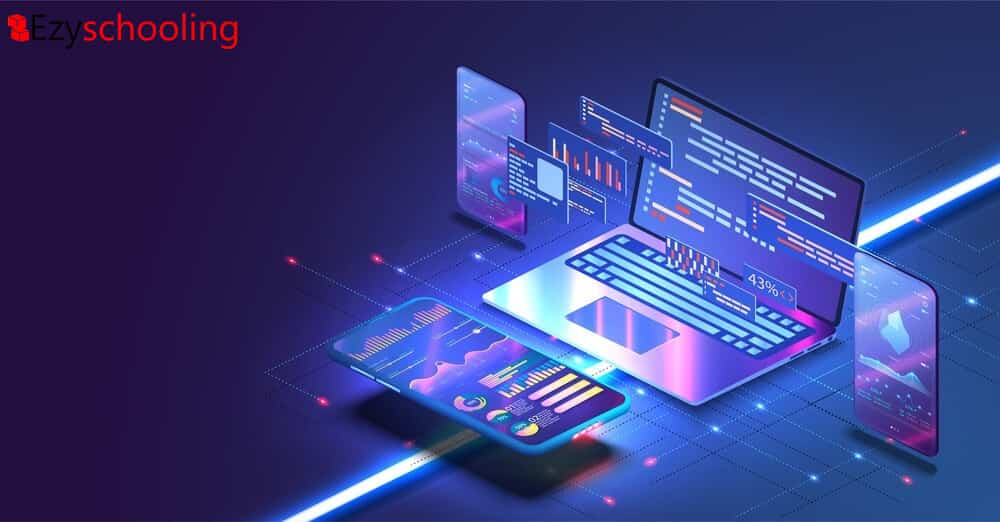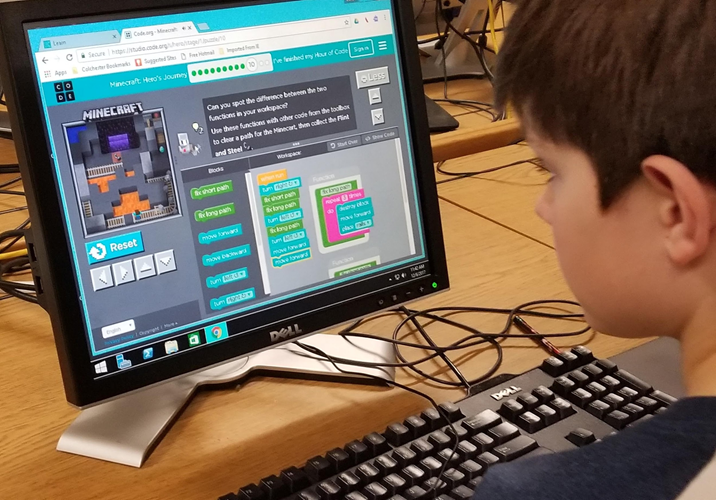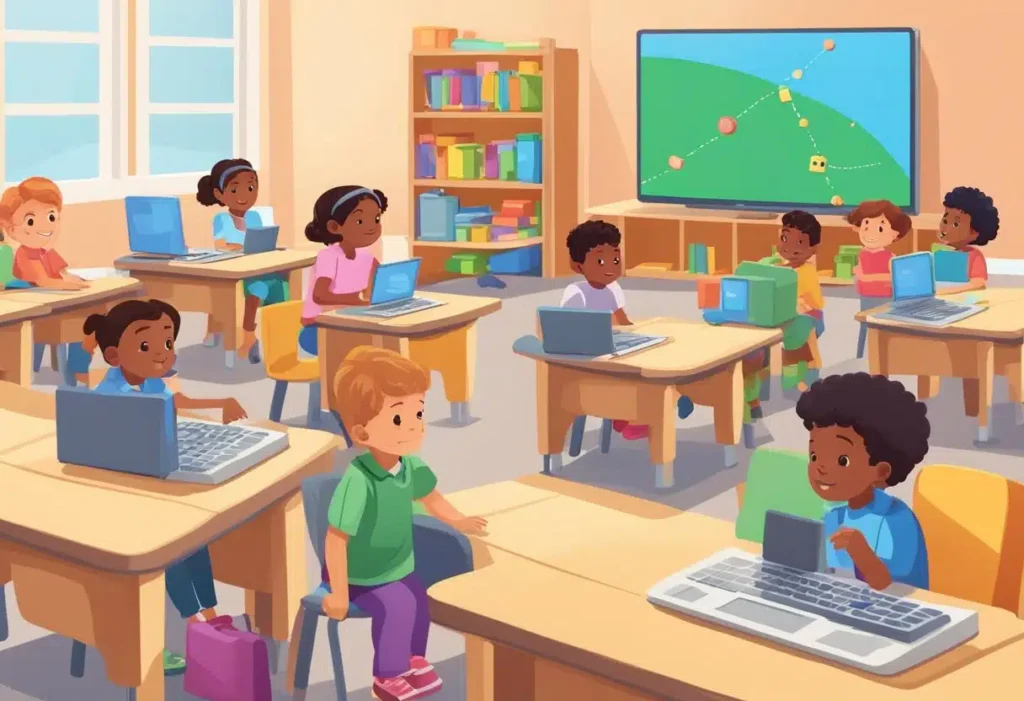
We offer a comprehensive curriculum developed by an international team, experienced teachers, and a focus on individualized and project-based learning.

We offer a comprehensive curriculum developed by an international team, experienced teachers, and a focus on individualized and project-based learning.

Interactive coding platforms are transforming how we teach and learn about technology, making it more engaging and accessible than ever before. Imagine a classroom where students don’t just passively absorb information, but actively build, experiment, and create.
This is the power of interactive coding platforms, and it’s revolutionizing education, especially in the Philippines where the demand for tech skills is skyrocketing.
In this blog post, we’ll explore:
It’s no longer confined to the realm of computer science; it’s a fundamental literacy that empowers individuals to understand and shape the technology that surrounds them. For Filipino students, mastering coding opens doors to a world of opportunities in the burgeoning tech industry and beyond.
Interactive coding platforms are online tools and environments designed to make learning to code more engaging, accessible, and fun. Unlike traditional coding education, which often involves dense textbooks and abstract concepts, interactive platforms provide a hands-on, gamified approach.
They offer a variety of features that simplify the learning process, such as drag-and-drop interfaces, visual programming blocks, and instant feedback mechanisms.
Traditional methods might involve reading a manual about balance and mechanics.
But with an interactive approach, you’d jump on a bike with training wheels and learn by doing. Interactive coding platforms provide that “training wheels” experience for coding, allowing students to experiment, make mistakes, and learn at their own pace. It’s like you have a coding platform in the classroom!
These platforms typically offer structured lessons, tutorials, and challenges that guide students through the fundamentals of coding. They often incorporate game-like elements, such as points, badges, and leaderboards, to motivate and encourage learners.
Many platforms also include collaborative features, allowing students to work together on projects, share code, and learn from each other.

The Philippines is rapidly becoming a hub for technology and innovation. As the digital economy expands, the demand for skilled professionals with coding expertise is growing exponentially.
Coding is no longer a niche skill; it’s a fundamental literacy that empowers individuals to participate fully in the 21st-century workforce.
From software development and data science to web design and cybersecurity, coding skills are essential across a wide range of industries. Filipino students who learn to code will have a significant advantage in the job market, opening doors to exciting career opportunities and contributing to the country’s economic growth.
Moreover, coding fosters valuable transferable skills that are highly sought after by employers. Problem-solving, critical thinking, and logical reasoning are all honed through the process of learning to code. These skills are not only essential for tech-related roles but are also valuable assets in any field.

Interactive coding platforms do more than just teach students how to write code; they cultivate a range of essential 21st-century skills that are critical for success in the modern world. These platforms provide a dynamic learning environment where students can develop:
These skills are not only valuable in the tech industry but are also essential for success in any field. Interactive coding platforms equip students with the tools and mindset they need to thrive in a rapidly changing world.
There’s a wide range of interactive coding platforms available, each with its own strengths and focus. Here are a few popular options that are particularly well-suited for Filipino students:
Developed by MIT, Scratch is a free, block-based visual programming language that’s ideal for beginners.
This non-profit organization offers a variety of free coding courses and tutorials for students of all ages. Their curriculum is aligned with the K-12 Computer Science Framework and includes engaging activities and projects.
Known for its comprehensive educational resources, Khan Academy offers free coding courses covering a range of programming languages and concepts.
Developed by Google, Blockly is a visual programming editor that uses interlocking blocks to represent code. It supports multiple programming languages and can be integrated into various educational platforms.
Created by Apple, Swift Playgrounds is a free app that teaches students to code in the Swift programming language, which is used to develop iOS apps.
These are just a few examples, and the best platform for your students will depend on their age, interests, and learning goals. Many of these platforms offer resources in Tagalog or Filipino, making them even more accessible to Filipino students.

Integrating interactive coding platforms into your curriculum doesn’t require a complete overhaul. It’s about finding creative ways to weave coding into existing subjects and activities. Consider these scenarios:
Real-life examples can be incredibly inspiring. Highlighting the achievements of Filipino students who have thrived through interactive coding platforms can motivate others and demonstrate the tangible benefits of learning to code.
Showcase outstanding projects created by students using interactive coding platforms. This could include games, animations, websites, or even mobile apps.
Gather feedback from students about their experiences with coding and how it has impacted their learning and aspirations.
Share stories of students who have participated in coding competitions, earned scholarships, or landed internships in the tech industry thanks to their coding skills.
Reach out to organizations and initiatives that promote coding education in the Philippines. They often have inspiring stories to share and can connect you with successful students.
By showcasing these success stories, you can demonstrate the transformative power of coding education and inspire more Filipino students to embark on their coding journey.

Interactive coding platforms offer a dynamic and engaging pathway to equip Filipino students with the skills they need to thrive in the digital age.
Remember, coding is more than just a technical skill; it’s a new form of literacy that empowers individuals to understand and shape the world around them. In the Philippines, where the digital economy is rapidly expanding, coding skills are becoming increasingly crucial for success in the workforce.
By embracing interactive coding platforms, you can provide your students with the tools and experiences they need to become active creators and innovators. You can empower them to not only consume technology but to build it, shape it, and use it to solve real-world problems.
As we’ve explored in this blog post, the benefits of interactive coding platforms are numerous:
Start exploring the world of interactive coding platforms today. Embrace the opportunity to empower your students with the skills they need to become the innovators and leaders of tomorrow. The future is code, and it’s waiting to be written by the next generation of Filipino students.
As we reach the end of our exploration into the world of interactive coding platforms, it’s time to recap the key takeaways and empower you to take action.
Throughout this post, we’ve delved into the transformative power of interactive coding platforms in education, particularly in the Philippines. We’ve seen how these platforms can make learning to code engaging and accessible, fostering essential skills for the future.
Here’s a quick recap of what we’ve covered:
Embrace the opportunity to transform your classroom and empower your students with the skills they need to thrive in the digital age. Book a demo today and unlock a world of possibilities for the next generation of Filipino innovators.

FutureClassroom is Southeast Asia's largest coding platform for K-12, empowering students with essential skills in Web Development, Game Development, Python, and AI. Aligned with Cambridge and Pearson standards, our platform combines interactive learning and real-world projects to prepare young learners for a future driven by technology.
View all posts
FutureClassroom is Southeast Asia's largest coding platform for K-12, empowering students with essential skills in Web Development, Game Development, Python, and AI. Aligned with Cambridge and Pearson standards, our platform combines interactive learning and real-world projects to prepare young learners for a future driven by technology.
Get all the latest information, support and guidance about the cost of living with kindergarten.
Start Registration